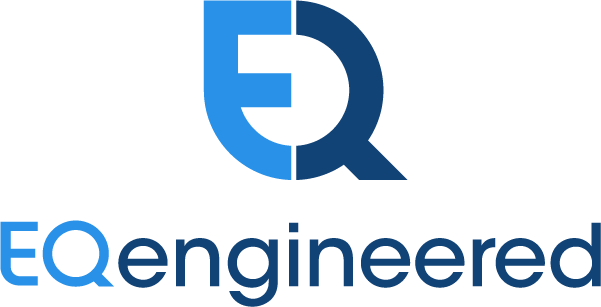Key Takeaways from the "Pioneering the New Era With AI: Imagination in Action" Summit by Mark Hewitt
1. From Silicon to Systems: Reframing Architecture for the AI Age
At the summit, one resounding theme was the elevation of system design beyond low-level code. Future-forward architects must reimagine human-computer interfaces—spanning hardware and software—with a clear understanding of I/O processes, performance constraints, and seamless orchestration across subsystems. Senior developers are now gatekeepers of systemic functionality, ensuring that evolving architectures can scale with AI’s complexity and power.
Hardware remains bounded by the physics of computation, yet rapid progress is visible. From Google's Willow chip to emerging optical networks embedded deep within machines, there's a clear shift: systems are no longer merely faster—they are smarter and more anticipatory.
2. Rethinking Compute: Optical, Quantum, and the Physics of Change
Despite decades of architectural stagnation, a profound inflection point is near. The optical revolution—chips infused with photonic pathways—promises exponential acceleration. At the same time, quantum computing introduces a fundamentally different computational paradigm. Quantum's slower "clock speed" belies its potential: solving mathematically intractable problems across pharma, materials science, and chemistry.
This fusion of physics and computation suggests a shift not only in performance but in how we conceptualize the very act of computing.
3. From Code to Cognition: AI Development as a Living Ecosystem
Modern developers operate in a multi-layered landscape—parsing structures, validating outputs, and adapting rapidly across hardware platforms. The rise of language server protocols (LSPs), AI parsers, and model validation pipelines has turned code into something alive: a fluid expression of intent, structure, and reasoning.
New chip designs, like those based on the Ozaki scheme, sustain Moore’s Law for another decade. But real velocity comes from integration: onshoring fabs, rethinking packaging, and shortening the 60,000-mile global supply chain that chips often traverse.
4. Quantum Computing’s Near Horizon: Promise and Pragmatism
We are entering the first decade where quantum has tangible business implications. From a research lens, its history echoes that of early classical computing: limited today, transformative tomorrow. Use cases will start in optimization—offline portfolio planning, drug discovery, and molecular modeling. Quantum isn’t suited to real-time tasks like trading but excels in domains where nature itself is quantum.
AI-quantum hybrids will emerge, blending classical image recognition with quantum acceleration. In fields like pharma, where data is inherently quantum, the synergy is already promising.
5. LLMs: Democratizing Intelligence at Scale
The GenAI landscape is evolving from closed empires to open ecosystems. DeepSeek’s 03 model outperforms predecessors by 500x on programming tasks. Open-source LLMs like DeepSeek rival OpenAI, offering cost-effective, smaller-scale deployments that universities and enterprises can run independently.
This democratization—smaller systems, shared research, and transparent governance—aligns with the ethos of Red Hat: transparency enables security, control, and innovation.
6. Responsibility and Risk: Balancing Innovation with Accountability
Concerns remain. Sam Altman’s reference to a “Terminator moment” sparked philosophical debates: What is consciousness? Functionality? Control? As AI systems begin to outperform human cognition, communities must govern transparently—ensuring open models with secure overlays protect societal interests.
Governance, regulation, and phased experimentation are essential. The "alignment board" concept—tying strategic investment to stage-gated, real-world outcomes—offers a scalable, accountable roadmap.
7. Enterprise Use Cases: From Prudential, Fidelity and WEX
The most compelling stories emerged from enterprise trenches:
Prudential shared use cases in legal summarization, customer service chatbots, and AI copilots embedded in financial workflows.
Fidelity emphasized high-precision AI in payment systems where governance is critical due to the cost of error.
WEX spoke of reimagining products, boosting fraud detection, and empowering 400 internal AI champions to drive transformation.
Each story reflected a balance of long-term innovation with short-term responsible experimentation.
8. Agility, Agents, and the Open AI Internet
The summit spotlighted NANDA, a vision for the open AI internet—akin to the World Wide Web's early days. Imagine agent-based commerce platforms where AI agents—trained by enterprises—compete, negotiate, and build reputations, guided by smart contracts and "Know Your Agent" (KYA) protocols.
This agentic economy would feature vertical integration, on-prem deployments, and open-source interoperability. It is not just technical infrastructure—it’s a new business model.
9. Strategic Takeaways for Leaders
Architectural Agility: Think in 24-month windows. Technology changes, but principles of clean system design endure.
Experimentation is Mandatory: Be technology-agnostic. Press the clutch, swap the tool, and adapt.
Jobs Will Evolve: AI is a force of displacement—and creation. Prepare for both.
Data as Differentiation: Models may commoditize, but proprietary data will define enterprise edge.
Secure Openness Wins: Openness does not mean exposure; it means verifiability and trust.
Final Reflections: Momentum Requires Community
From MIT’s ambitious partnerships to Davos’ forward-looking dialogues, one truth echoed throughout: no one gets there alone. Collaboration, open infrastructure, and thoughtful leadership will define the AI era. The summit was a reminder that visionaries are building the future now—and that with the right mindset, tooling, and integrity, we can shape it for the better.

